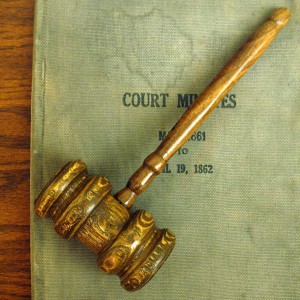Do As I Say, Not As … You Think I Said
 Last week, the U.S. Supreme Court handed down a decision that only got a modicum of notice, and mostly for its result. In Chase Bank v. McCoy, the Court said that regulations prior to the financial reform law didn’t prohibit credit card companies from jacking up your interest rate without warning. Of course, that’s moot now, because the law has changed and they can’t do it anymore. So it’s kind of a non-event, right?
Last week, the U.S. Supreme Court handed down a decision that only got a modicum of notice, and mostly for its result. In Chase Bank v. McCoy, the Court said that regulations prior to the financial reform law didn’t prohibit credit card companies from jacking up your interest rate without warning. Of course, that’s moot now, because the law has changed and they can’t do it anymore. So it’s kind of a non-event, right?
Well, not so fast. In this case, it’s not the outcome that was helpful to the future, but rather the reasoning. You see, the Federal Reserve Board did the regulations that addressed the ability for credit card issuers to change terms (like raising rates), and thought it was pretty clear.
But courts didn’t get the memo. They started interpreting the Fed’s rules in ways that the Fed didn’t think were right. And the Fed said so. But the real question is: who should the courts rely on? Their own interpretation of the regulations, or what the Fed said they meant?
There are reasonable arguments for both sides. After all, it is the province of the judiciary to saw what the law IS. But the Federal Reserve Board actually made the rules, and you’d think they’d have a good idea of what they meant.
Well, the Supreme Court said that in this case (and, one assumes, more generally), increased deference goes to the agency (i.e., the Fed). While agencies can’t rely on the fact that they’ll be consulted and trusted in every case of interpretation, the likelihood is ever growing.
Of course, this raises an issue of the relative powers of the branches. As you increase the ability of the executive branch agencies to be the deciders, you’re reducing the independence of the judicial branch (theoretically). And if the judicial branch is less politically motivated than the executive (since the executive stands for election on a regular basis and federal judges don’t), subjecting regulations to the whim of the elected official may not always be a good idea.
It’s a balancing act, of course, and the “right answer” seems to oscillate over time. But the McCoy case should be noticed for more than an issue of credit card fees — it’s another data point on how much power our executive agencies have.